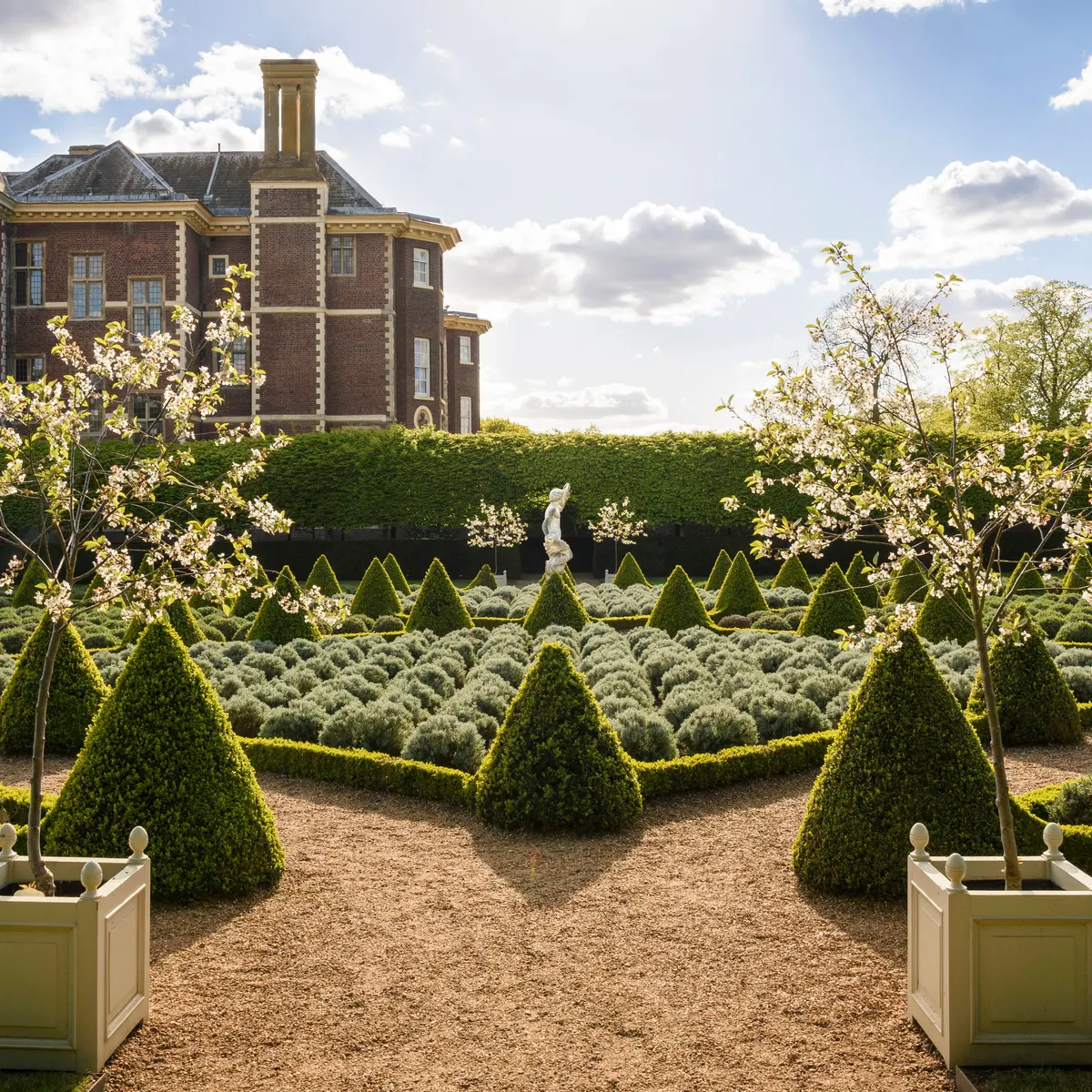Commitment to Heritage
As Europe’s largest conservation charity, the UK’s National Trust plays a key role in preserving Britain’s heritage, opening up many stately homes, castles, and industrial monuments to the public as well as gardens and coastal paths. As a result, the charity looks after nearly a million artworks and is committed to conserving and showcasing the fine arts as part of its broader educational and cultural mission.
Founded in 1895 by Octavia Hill, Robert Hunter, and Hardwicke Rawnsley, with the aim of saving and opening important sites to the public, the National Trust was crucial in protecting Britain’s historic and natural places during a period of rapid industrialisation in the late 19th century. Consequently, people can enjoy learning about Britain’s rich history spanning over more than a thousand years across a range of different sites.
Arguably, the most significant way the National Trust was able to achieve all of this is due to the generosity of donors and funders. The Trust largely benefits from gifts, bequests, and government schemes, such as the Acceptance in Lieu Scheme. This allows property of cultural, scientific, or historical importance to be transferred to His Majesty’s government instead of tax payments, and has been used by many families since its creation due to the large inheritance tax imposed on estates. The items collected are then allocated to national bodies, including the National Trust. For example, the portraits by Daniel Mytens and Thomas Gainsborough which are displayed in Knole, a 400 year old country house in Sevenoaks, Kent.
The National Trust does occasionally purchase items, however, often with the help of the Art Fund, a charity which for over 120 years has been helping museums enhance their collections to promote art and culture. An example of this is the recent acquisition of the painting ‘Saint Agatha’ by Carlo Dolci, thanks to a £85,000 grant from the Art Fund.
Together with the acquisition of various fine art collections, as well as the properties they were once displayed in, members of the public benefit from being able to view the art in situ. Seeing it placed in a home it was bought for, close to the time it was produced, often in a typical home for that style, it helps the viewer contextualise the artwork, particularly if the previous homeowner had a personal relationship with that painter. This subsequently enhances the work of art’s ability to tell a story of the society in which it was produced.
Interior Design – Chinese Wallpapers
According to the National Trust, it “looks after the largest collection of historic Chinese wallpapers on permanent public display in the world”. The growth in trade between Europe and Asia in the 17th and 18th centuries led to the British middle and upper classes developing a taste for Chinese art and design, with them becoming an interior design staple for British country houses from the mid-18th century. Whilst wallpaper is not usually considered a fine art, Chinese wallpaper from around this period can be considered to be a fine art as it would have been very expensive and luxurious at the time and most examples are extremely elaborate and rare.
Art Masterpieces
The National Trust looks after over 13,000 oil paintings, most of which are still located in the houses of their original owners. Whilst most of the painters are not household names, there are some notable exceptions. For example, The ‘Adoration of the Magi’ by Hieronymus Bosch (c1515), ‘The Dormition of the Virgin’ by Pieter Bruegel the Elder (c1564) and ‘El Espolio’ by El Greco (c1578) which are all at Upton House in Warwickshire. There is a Rubens (‘Marchesa Maria Serra’) at Kingston Lacy in Dorset (on England’s south coast), a Velazquez (‘Prince Baltasar Carlos’) at Ickworth in Suffolk and a Rembrandt (self-portrait, wearing a Feathered Bonnet) at Buckland Abbey in Devon (also on England’s south coast). All of these paintings are important from a cultural perspective and of such quality that they could be displayed at the National Gallery in London, England’s most prestigious art gallery.
Promoting Access to Fine Arts
The National Trust also aims to promote engagement in contemporary art with living artists.
Launched in 2009, the initiative ‘Trust New Art’ aims to engage new audiences with contemporary art, benefitting from Arts Council England funding. So far, it has collaborated with over 300 artists and has completed over 200 projects at over 60 places. Some of these include the light installation ‘The Artificial Sunshine’ at The Agory in County Armagh, Northern Ireland, ‘Field of Play’ in Attingham Park, Shropshire, and ‘A Women’s Place’ in Kent.
Conservation
The significant number of fine arts held by the National Trust requires an enormous amount of care as some are very delicate and old. The Trust established a specialist in-house Textile Conservation Studio in 1976 at the Blickling Estate, Norfolk. Many of the textiles treated are of international importance, examples include the Gideon tapestries (Hardwick Hall), the state beds at Knole in Kent, doll’s houses such as those at Nostell Priory and Uppark and the Book of Hours at Coughton Court.
Additionally, the Royal Oak Foundation Conservation Studio specialises in the conservation treatment of the decorative arts, including paintings, frames, furniture, ceramics and glass. The studio is situated in a 15th century barn at Knole in Kent and is open to the public, so people can see the day-to-day activities.
Conclusion
With it being nearly 130 years since it was founded, the National Trust has played a vital role in the preservation and conservation of the UK’s fine arts heritage.
If you are interested in visiting, access to some of the National Trust’s properties is free, although most charge around £15 per adult. For those wanting to visit regularly, annual membership is £84 (€98) for an adult and £42 (€49) for an 18-25 year old, allowing free access to all of the National Trust’s properties.

